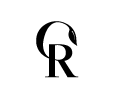We (also) have to sort textiles – and that's good!
There are many who almost fear the waste requirements of the future. The national waste plan comes into force on 1 July 2021, and after that we all have to sort between ten types of waste. However, textile sorting will not be implemented until 2022.
I often hear "do we have to have ten municipal waste bins to stand in the driveway?!", and it is true that in the long term we will have to sort into ten types, but the government also emphasized that we must have a maximum of two to four municipal waste bins with several spaces to stand in the driveway of detached houses.
In Denmark, we currently have 98 different ways of sorting waste - one for each municipality. But from 1 July 2021, the collection of waste will be harmonized across municipalities. We have to sort the same in businesses, private homes and holiday homes in all municipalities, and in addition we get the same pictograms for the different types of waste. Hopefully, it will make it both easier and more logical to take part in the important joint task of giving the resources a longer lifespan.
The 10 types of waste are cardboard, paper, metal, glass, plastic, hazardous chemicals, textiles, food cartons, food and residual waste. Ready to sort more? Take a look at ReCollector's flexible sorting system here .
Your old rags are a resource!
Here, let's take a closer look at a single type of waste: textiles.
Textiles are one of the new types of waste, and it makes good sense to sort textiles. The production and consumption of clothing and textiles leaves a huge impact on the environment. Hardly so lucky when we consume more and more clothes and use them for a shorter period of time than before. The Danish Environmental Protection Agency estimates that, on average, we in Denmark consume more than 13 kg of textiles per year. inhabitant every year in our household, and that just one simple regular t-shirt requires 1,400 liters of water to produce. When you add it up, it becomes clear that the production and consumption of textiles is a really big climate culprit. (Source: Danish Environmental Protection Agency (2018): Mapping of textile flows in Denmark: here ).
The best thing for the environment would be to consume less clothing. But there is also much to be gained by letting used textiles get a 'new life' rather than disposing of them in an incineration plant. Either as direct reuse or recycling, which are not quite the same.
In Denmark, we have a good tradition of throwing away clothes for recycling. But we only hand in what we think we can pass on - and that's why a lot of clothes end up in the rubbish bag and from there on to the big, municipal oven.
But then there was recycling. With the new waste sorting, holed clothes, rags, bedding and other used textiles are also collected. So yes, your used and holey pants can actually be useful when they no longer have to live in your drawer. Typically, this type of textile will be used as insulation in a car door or – if the fibers are good enough – as raw material for new textiles.
Many municipalities already collect textiles
Several municipalities and waste companies have already introduced various schemes to make it easier to hand in clothes and textiles for reuse and recycling. But from 2022 it will be a requirement, and we can expect even better opportunities to hand in textiles through the municipal waste schemes. Keep an eye on the measures in your own municipality.
From here, a hurrah sounds, because action has finally been taken in an area where there are really big environmental benefits to be had.
